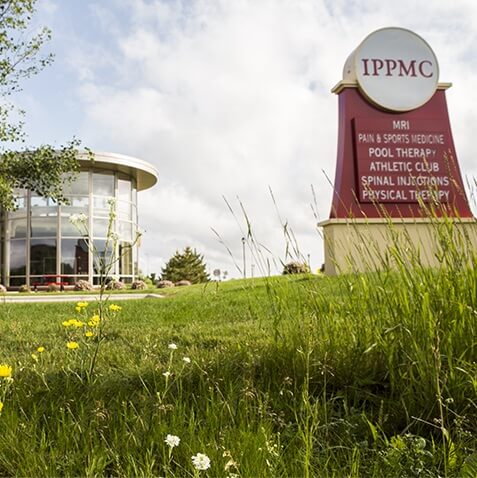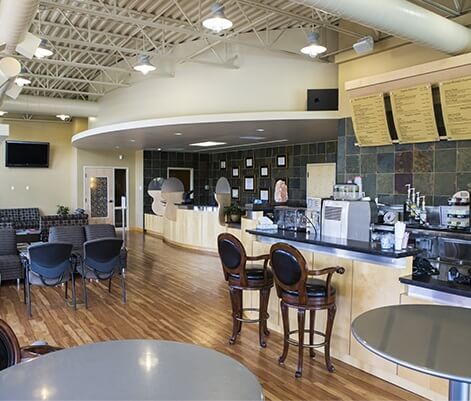The Amazing Heart-Health Benefits of Saunas
By: T. Jared Bunch, MD (Everyday Health)
A recent clinical study looked at the use of a sauna and heart-related disease and deaths in Finland, a northern country that can experience up to seven months of winter. In locations like this, where the climate is often dark and cold, people have added heart-health risks.
I had the pleasure of spending nearly a decade in Rochester, Minnesota, also a cold climate. For most of the people I worked with who did not originate in Minnesota, October typically brought an ominous change in weather. October meant that the short fall season would be rapidly replaced by a cold, dark winter. I spent a few January months where the temperatures rarely rose above zero degrees and often felt colder due to frequent winds. As we huddled together to keep warm, the natives of Minnesota would tell us about winters past that were much colder.
I never fully adapted to the winters. I am inclined to think that you need a certain amount of cold weather genetics to tolerate weeks of subzero temperatures. I came to this conclusion when I watched seemingly normal people take off their clothes and jump into freezing cold Minnesota lakes in January to become part of a Polar Bear Club.
A Love Affair With Saunas
One of my close friends in Minnesota seemed to tolerate the winters better than the others. He had lived in Finland. The Finns have learned to adapt to and enjoy winter. Some of this adaptation is a result of Finns’ love affairs with their saunas.
My friend actually built his basement entirely around his central dry sauna bath. When he would invite you to his home, sometimes the first thing you would do was meet in the sauna.
In cold, dark climates people are often less active. Obesity rates increase, depression can develop, and in many places these trends can increase risk of heart disease. This context of geographic risk related to cold weather is important in understanding the true value of the new study that looked at the use of a sauna and heart-related disease and outcomes in Finland.
Frequent Dry Sauna Use and Heart Health
For background, a typical Finn’s sauna may be different than what you are thinking. They typically use dry heat of 60 degrees C to 100 degrees C (140 to 212 degrees F) with humidity of only 10 percent to 20 percent. The sauna is a place for friends and family to relax, physically and mentally.
The study, published in JAMA Internal Medicine, included 2,315 middle-aged men from Eastern Finland. These men were studied over a period of 21 years on average. The authors wanted to see if the heart health outlook was changed by how often these men used a sauna. Investigators compared once-a-week sauna use to a more frequent pattern of two to three saunas a week, and to even more frequent use of four to seven times a week.
An interesting aspect of this study was that only 12 of the more than two thousand men had to be excluded because they did not use a sauna, which is a testament to the Finns’ love for sauna.
Here are the study results:
1.Men who used the sauna two to three times a week were 22 percent less likely to have sudden cardiac death compared to men who used it only once a week.
2.Men who used the sauna four or more times a week were 63 percent less likely to experience sudden cardiac death compared to men who used it only once a week.
3.Finns who spent more time in the sauna — more than 19 minutes per session compared to less than 11 minutes — were 52 percent less likely to develop sudden cardiac death.
4.Coronary artery disease is a leading cause of death throughout the western world. Men who used the sauna two to three times a week were 23 percent less likely to die from coronary artery disease than those who used it once a week.
5.In men who used the sauna four or more times a week, the risk of dying from coronary artery disease was 48 percent lower than men who used it once a week.
6.The lower risk of sudden cardiac death and death related to coronary artery disease was seen across different heart disease risk factors such as high blood pressure, diabetes, active smoking, and older age.
7.The risk reductions with sauna use were almost identical when the investigators looked at all types of heart disease.
How Do Saunas Lower Heart Disease Risk?
There are many important take-home lessons from this study. Even if you don’t have access to a traditional dry sauna, you can get some of the beneficial aspects of the sauna in your life.
1.Relaxation is good for your heart: The Finns use the sauna for physical and mental relaxation. Our bodies, minds, and hearts need time to relax. This simple act of taking time to relax lowers stress and anxiety, improves our ability to accomplish tasks, improves creativity, lowers risk of burn out, decreases our blood pressure, and can lower our risk of developing abnormal heart rhythms. The time we spend is likely a progression benefit, meaning the more time, the better.
2.Strong social connections can help your heart: The Finns use the sauna to spend time with family and friends. It is well known from multiple research studies that people live longer who are connected to others, feel part of a community, and have enduring and supportive relationships. Taking time for friends and family is essential in trying to live a longer life.
3.Sauna use can stimulate your heart rate: When our bodies are exposed to the heat in these saunas in the lower temperature ranges, our heart rates can exceed 100 beats per minute. When the temperatures are in the high range, our heart rates can exceed 150. These heart-rate responses and the increase in our heart output can mimic exercise training. One hypothesis is that dry sauna use replicates many of the beneficial aspects of exercise for our cardiovascular system.
4.Sauna use, like exercise, can lower your blood pressure: In a sauna, our blood pressure often lowers. In addition, the very small blood vessels that are vital to the function of our body organs relax and dilate. We call the ability of the blood vessels to relax and dilate the endothelial function. People who frequently use a sauna have better endothelial function. When endothelial function is lost, we are more likely to develop coronary artery disease, stroke, and abnormal heart rhythms. One of the great benefits of exercise is also keeping the endothelial function healthy.
Unfortunately, we do not know if these heart benefits with dry sauna use can be achieved in saunas that use much higher humidity levels by pouring water over hot rocks, in steam baths, or in hot tubs. I hope these other sources of therapy will also be studied.
How to Stay Safe in the Sauna
As a word of caution, in a typical sauna session a person can lose 1.1 pounds of sweat. This is a lot of fluid. People with pre-existing heart disease, kidney disease, orthostatic hypotension (low blood pressure), or a prior history of passing out should avoid these types of fluid losses until they have met with their physician.
When you lose that much sweat, you lose many body electrolytes such a sodium, potassium, magnesium, and calcium. These electrolytes need to be replaced to keep our heart’s electrical system healthy and beating normally.
Alcohol is a diuretic and can make you lose fluid even if dehydrated. Using alcohol and then being exposed to a dry, hot sauna can be a dangerous combination that leads to unsafe drops in fluid, blood pressure, and electrolytes.
The good news is that the Finns have shown us that using a near-daily therapy that includes relaxation and social bonding, as well as favorable stimulation to the heart and blood vessels, can lead to powerful and long-term benefits. It can improve longevity and lower risk of significant coronary artery disease.


